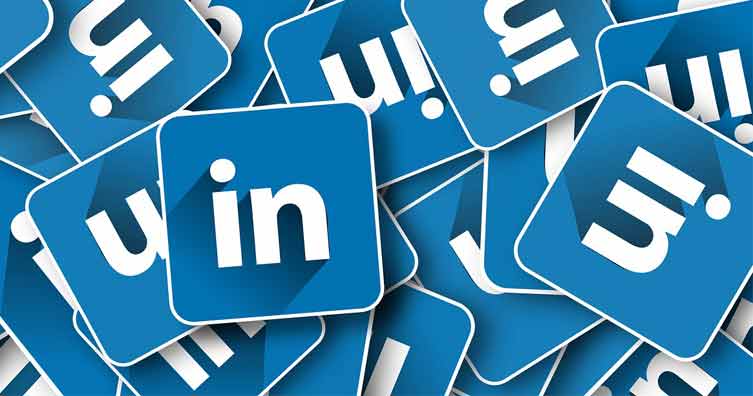How to use LinkedIn to get a job in 2024
Tired of applying for job after job and getting nowhere? We might just know the answer. The shortcut to your dream graduate job could be LinkedIn.

On the face of it, LinkedIn may simply seem like an online CV. But on a platform where scores of employers are looking for prime candidates every day, it's a pretty useful CV to have.
Not only is it a great way of networking with leading figures in your chosen industry, but you can also use it to promote your achievements and build up a professional online presence. Plus, if you've got the entrepreneurial spirit, you can even boost your own business on there.
The key to using LinkedIn effectively is to make sure you're 'discoverable' to employers and agencies, as well as using those all-important connections to your advantage. Here's how to do it.
13 ways to use LinkedIn to find a job
Here are the best ways to get a job on LinkedIn:
-
Create a strong profile
Step number one, of course, is to create your LinkedIn profile.
You can change and update your profile as often as you need to. So, continue tweaking any bits that don't work, or add to it as you go.
The more changes and additions you make, the more 'active' your profile appears to the system. This increases your chances of being seen by potential employers.
-
Pick the perfect LinkedIn profile picture
Profiles without a photo look inactive and unimpressive in search results. Make sure to find a photo of yourself that's hi-res and suitable for work.
Avoid super obvious selfies or group photos (even if you've cropped everyone else out). Graduation photos are always a safe bet, but try not to make your picture too uptight and formal either.
Make sure you're smiling and looking approachable! Remember that you're trying to sell yourself as someone good to work with.
Obviously, avoid silly filters. But LinkedIn does have a filter function that lets you adjust the colours on your photo for optimum effect.
You'll also notice the option to upload a background or cover photo. This is less important but if you have something which you think will be relevant, go for it. A photo of some work you've created, or you 'in action' might be more suitable here.
Top tip: You can even use your photo as an opportunity to sell any relevant skills. Think hand-drawn portraits, your face as an app logo or a chance to show off your photography skills.
-
Write a LinkedIn headline that makes you stand out

Credit: HAKINMHAN – Shutterstock
The headline is the first thing any potential employer will see. Make sure it stands out and portrays what you have to offer.
Avoid something general like 'student'. List a dream job, your freelance or part-time work, relevant hobbies or the title of your last work experience gig.
Or, go for a combination:
Aspiring games designer | Politics blogger | Award-winning student writer
If you want to be found by recruiters, or anyone else searching the site, choose keywords over eccentricity. Wordplay might tickle you and impress your mates, but it doesn't often appear in job ads, meaning you'll be less searchable. -
Include a professional summary in your profile
Use the summary box to showcase your achievements and aspirations or present an elevator pitch. Mention why you make a great employee.
You only have around 50–100 words, so make it count. Try to include keywords that recruiters or others are likely to search for. Don't forget that your profile could show up in internet searches, too.
Here are some LinkedIn professional summary examples to get your juices flowing:
Final-year student working towards a career in Journalism. As section editor for the university newspaper, I've become hooked on crafting good copy and developing other writers. I'm also fascinated by the rise of digital publishing versus print – a battle I'm following keenly in my blog.
As a freelance web developer, I create beautiful and functional websites for businesses in Gloucester and across the UK. I revel in streamlining user experience (UX), finding ways to reduce page load speeds and making sites mobile responsive – so your content reaches all your customers, all of the time.
Include contact details in your summary if you want people to get in touch. But don't use a personal email address unless you love spam. Link to your website instead.
-
Promote your work experience on LinkedIn
Follow prompts to list your work experience, any courses you've taken, voluntary work and exam results. There's a pretty hefty list of things to choose from.
You don't have to add all of them. Pick and choose the ones that add value to your profile, that you're proud of, or that you'd like to show up in searches.
It (almost) goes without saying, but make sure you comb through your profile for typos and broken links. Any mistakes in this area will reflect badly on you to potential employers.
Top tip: Don't just say what you did. Show what you contributed and how it made a difference.
-
Get recommendations and endorsements for work skills
Ask current or former employers and colleagues to post testimonials to your profile page to add credibility to any skills or projects you've listed. You don't have to accept or show any that you don't want the public to see, though.
As well as sprinkling relevant keywords throughout your profile, you can add skills separately.
Don't just use generic ones like leadership or teamwork. Think about any software or technology that you're an experienced user of.
What skills do you have which will make you stand out?
Your LinkedIn connections can then confirm that you're good at something by endorsing you for the skills you've listed. These will appear on your public profile to show how talented you are.
-
Use LinkedIn's job-search function
Don't forget there are loads of jobs listed on LinkedIn.
Use the search function and subscribe to job alerts to quickly see new listings.
Follow companies you'd like to work with so you're first to know about any job opportunities, graduate schemes or expansion plans.
Jake Butler, COO at Save the Student, said:

When we are looking for new people to join the STS team I always double check LinkedIn. I've used it to not only post and advertise positions, but also to take a look at potential candidates.
After also previously working in recruitment, I cannot stress how important it is to have an up-to-date and professional LinkedIn profile.
-
Share your successes in LinkedIn posts
It might not come naturally to you to show off your successes, but LinkedIn is all about selling yourself.
If you accomplish something, whether it's an award, a successful project or high marks in a particular assignment, write a status about it and share it with the world.
You don't just have to focus on the good moments. You can also talk about the challenges and failures you've overcome along the way.
You can also post about issues relevant to your industry, or topics relating to recruitment in general. Topics like unpaid internships or interview feedback tend to generate a lot of conversation.
Remember to pay it forward by sharing and liking other posts, too.
-
Use LinkedIn for networking

LinkedIn, as the name suggests, is all about linking up with people in your industry or field of expertise.
Connect with anyone you've worked or studied with, and ask them to introduce you to their connections too.
It's sometimes considered bad etiquette to add people you don't know on LinkedIn. Still, it's usually fine if the other person can quickly see from your profile that you have similar interests or shared connections.
LinkedIn can also be a useful way of staying in contact with interviewers after an interview, or anyone you might have come into contact with on work experience placements or internships, however briefly.
If you're worried that they won't recognise you, write a short message to jog their memory.
You might be able to gain a lot of useful insights from your connections. Look at how other people in your field are creating their profiles and take note of what career path they took. In particular, you might find it useful to see which companies employed them when they were first starting out.
-
Optimise your LinkedIn privacy settings
The privacy settings on LinkedIn are very different from other social media networks. You need to make sure you're only showing people what you want to.
Firstly, when updating your profile you might notice an option to share it with your network. If this is selected, then your followers will see your updates on their newsfeeds. Maybe save this for bigger moments.
You'll also be given the option to make things public or only visible to your connections. It's a good idea to make some things public so they show up for employers who are searching on LinkedIn or Google.
But here's the big one. People will usually be notified if you visit their profile. And likewise, you'll be notified of whoever visits yours.
You can disable this in your privacy settings so you can browse anonymously, but in exchange, you'll no longer be able to see who's looking at your profile. Look out for the 'Profile viewing' section of the settings to change this.
There are also privacy settings that let you hunt for new jobs without letting your current employer know – clever! Have a look and see which ones work best for you.
There's the option to personalise the URL for your profile. You can use your name, job title or other keywords. This will help you become more discoverable in search engines. -
Join LinkedIn groups
Join and contribute to groups related to your industry. Get inside info and learn how your sector works from the inside out, get known for having an opinion or specialism, or find people who can tell you more about their career path to see if it interests you.
Once you've joined a few key groups, you can message other group members to introduce yourself or your services. But avoid being seen as a spammer. Make sure you're sending relevant emails to the right people, asking questions or offering to help with their projects.
-
Share articles on LinkedIn and write your own
People often share interesting articles on LinkedIn, either ones they've written or sourced from elsewhere. Follow the right people and soak it all up.
Having some solid knowledge of recent developments in your industry will pay off in interviews. You can also follow the blogs of companies you're interested in to keep up with their latest news.
But if you have something to say that won't fit in a snappy status update, write a blog post instead. Simply hit the 'Write article' button on the homepage and get typing.
Sharing your own opinions and knowledge on a subject will impress employers and help get your name out there. You can even add images for extra impact.
-
Use LinkedIn for interview prep
LinkedIn will be your number one source of information when preparing for an interview.
Find out who will be interviewing you and look them up on LinkedIn. Look at their career path, their specific interests and any current projects they're working on. Use it to your advantage and tailor your answers to engage them.
It's completely free to use the site. But, for added features like appearing as a featured applicant for jobs, see if you're able to get a free trial of LinkedIn Premium. It's one of our favourite free trials, but just remember to unsubscribe before you're charged.
If LinkedIn's not your vibe, try using other social media channels to get a job.








